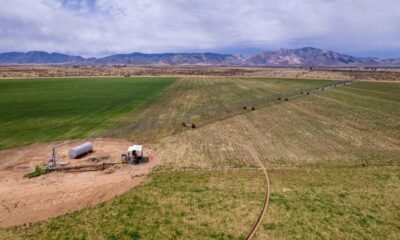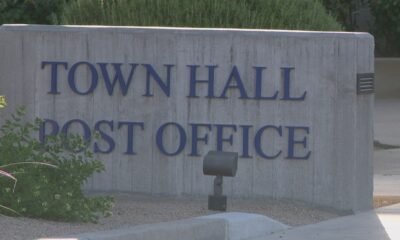Entertainment
Grand Canyon’s Sole Water Pipeline Breaks, Forces Overnight Hotel Closures

GRAND CANYON NATIONAL PARK, Ariz. (AP) — A significant water pipeline failure has prompted the unexpected suspension of overnight accommodations at the Grand Canyon National Park during peak tourist season. The Transcanyon Waterline, which has experienced issues in the past, has suffered multiple breaks, resulting in immediate restrictions.
The water crisis comes at a challenging time, as the park faces increased demand over the Labor Day holiday, traditionally one of its busiest periods. Currently, no water is being pumped to either the South Rim or North Rim, marking a historic low for the park.
Since July 8, persistent issues with the water supply have plagued the park, leading to the enforcement of “Stage 4” water restrictions. This level has not been implemented previously, even with over 85 major breaks reported since 2010. Recent significant breaks were the tipping point for the restrictions that will last through the holiday weekend.
Heidi Zahner Younts from Iowa City expressed her dismay over the situation, having planned a special trip with her daughter. Despite the disappointment, she found alternative accommodations outside the park, hoping the restrictions might decrease crowds. “Less traffic and people” would enhance her experience, she added.
The pipeline, originally constructed in the 1960s, is critical for providing potable water to facilities on the South Rim and within the canyon. The National Park Service has acknowledged that the infrastructure has outlived its expected lifespan, and a $208 million rehabilitation project aimed at updating the waterline began recently, with completion expected in 2027.
Despite the water limitations, the park remains open for daytime visitors, and hotels outside its boundaries—such as those in nearby Tusayan—are not affected. However, the understanding that the park is partially closed could harm local economies reliant on tourists. Communication director Josh Coddington of the Arizona Office of Tourism anticipates an influx of inquiries regarding visitation to the Grand Canyon, emphasizing its global reputation.
Park officials are actively working to restore water services and hope to reinstate overnight accommodations swiftly. However, repairs are complicated by the challenging terrain in “the box,” an area prone to rockfalls and high seasonal temperatures. A recent photo shared by officials illustrates the water gushing from one of the breaks, highlighting the urgency of the repairs.
With nearly 523,000 and 466,000 visitors recorded in the previous August and September respectively, the park strives to address the water supply needs of its annual 6 million visitors and approximately 2,500 year-round residents. Park officials are committed to swiftly resolving the current predicament to ensure a positive experience for future guests.
Yamat reported from Las Vegas, with contributions from Associated Press journalists Walter Berry, Felicia Fonseca, and Lisa Baumann.
Copyright 2024 The Associated Press. All rights reserved. This material may not be published, broadcast, rewritten or redistributed without permission.


















